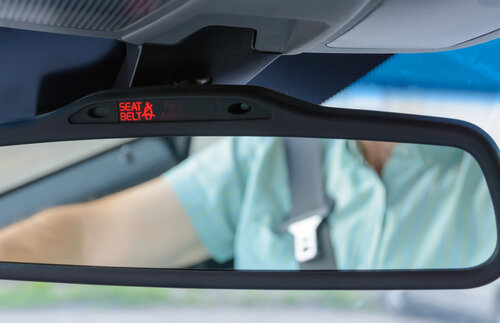Can one use Comparative Negligence against me?
What if I Am Not Wearing My Seatbelt and Someone Else Hits and Injures Me?
You are in a hurry to get to work, so you jump into your car and don’t put your seatbelt on before you immediately pull out of your driveway, instead planning to buckle up at the first red light you reach. You tap your brakes at the stop sign at the end of your street like always and, just as it appears the coast is clear for you to go and you start to proceed into the intersection, a driver coming from the opposite direction blows right through a stop sign without even slowing down and smashes into the side of your car. You have no chance whatsoever even to brace yourself, let alone to brake. An ambulance comes to take you to the hospital, where you are diagnosed with multiple broken bones that will require several surgeries, months of therapy and all sorts of other expensive medical treatment to deal with, all due to the other driver’s negligence. Despite the clear negligence of its own driver in blowing through a stop sign and hitting your car when you had the right of way, the other driver’s insurer and attorney keep bringing up the fact that you were not wearing your seat belt or had comparative negligence at the time the accident occurred every time your attorney attempts to discuss settlement with them. This is simply a red herring, however, as the jury at trial will be instructed by the judge to apportion fault for the accident according to the evidence. You can still recover from the other motorist/his insurer for your injuries that were caused by that driver in whatever proportion of fault the jury assigns that driver for the occurrence of the accident in which you were injured.
The Change to Comparative Negligence in Florida
If this exact scenario had occurred to you in 1965 and you attempted to file suit against the driver that hit you, you would have been out of luck because, like most states at the time, Florida had something called contributory negligence in personal injury actions. This meant that if a jury found you to be even 1% at fault yourself in an accident where someone else was 99% responsible, you would still be barred from seeking recovery from the other motorist because of your own role in the accident in which you suffered injuries. Thankfully, like most states except for Virginia and a few others, Florida has done away with the system of contributory negligence due to the harshness of the rule to those who may have been somehow at fault in situations in which one person is rarely 100% at fault.
So, What Would Happen In This Scenario Now?
Given the change in Florida to a system of comparative negligence in 1973, the jury now determines the percentage of fault that is attributable to all parties to a particular scenario. A party that is injured by another can then seek to recover whatever proportion of his or her damages were determined to be caused by the negligent party in whatever proportion of fault the negligent party is determined to bear in connection with the incident. Therefore, the jury in your case would assess the driver who blew the stop sign and hit you whatever proportion of fault it believes he had in causing the accident and your subsequent injuries and would then assess whatever proportion of fault it believes you bore in connection with that same accident.
This means that, even if you were not wearing your seatbelt, you can still recover from the other driver. The fact that you were not wearing your seatbelt is now simply one factor for the jury to consider when apportioning fault in connection with the accident in which you were injured versus the complete bar to your recovery it would have been in 1965. Therefore, if the jury found you to have suffered $100,000 in damages and injuries because of the motor vehicle accident and assigned you 10% of the responsibility for the occurrence of the accident while assigning the other driver 90% fault, then you would be permitted to recover $90,000 from that driver.
Contact Schwed, Adams & McGinley
At Schwed, Adams & McGinley, our experienced personal injury attorneys have more than 200 years of combined legal experience representing motorists who have been injured by someone else’s negligence in virtually every type of accident or scenario. Even if you were partially at fault in the accident in which you were injured or had comparative negligence, you can still recover from the other motorist(s) that may have either caused or been involved in that accident for any injuries their negligence caused you. At Schwed, Adams & McGinley, our experienced personal injury attorneys know exactly how to emphasize the negligence of another party in causing an accident while at the same time minimizing our own client’s role in the occurrence of that accident. We have done this successfully hundreds of times. Thus, if you were injured in a motor vehicle accident or any other type of personal injury scenario in Florida, and regardless of whether you may have had some role in the incident in which you were injured, contact our experienced personal injury attorneys today at contact@schwedlaw.com or (877) 694-6079 today.





